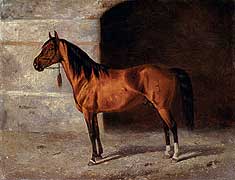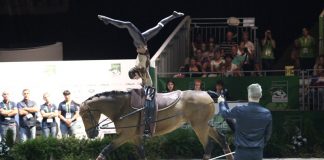Two teams of horses and riders face off on a grassy field. The riders wield mallets and chase after a ball at a full gallop, often leaning precariously off the side of their mounts to make a hit. The game of Chovqan sounds similar to polo, but its usual setting is a far cry from the highbrow polo fields of the U.S. and Europe.
Chovqan is an ancient game played in the Eastern European country of Azerbaijan originally intended to sharpen and showcase the riding skill of young men. In some regions, the game was historically included in official ceremonies and holidays.
While the game has a long history, its future is uncertain. Traditionally, riders have been young men, but interest in the game among the younger generations has faded. Urbanization and migration have reduced the horse culture in Azerbaijan and interrupted the long tradition of Chovqan.
Because of the cultural significance of Chovqan and its decline, the United Nations Educational, Scientific and Cultural Organization (UNESCO) has classified it on the List of Intangible Cultural Heritage in Need of Urgent Safeguarding. In its decision to include Chovqan on the list, UNESCO cited the following list of reasons for doing so:
- The knowledge and skills related to Chovqan are transmitted from generation to generation and from more experienced players to younger ones; Chovqan is part of the everyday life of the community and provides its practitioners with a feeling of identity and belonging;
- The viability of the element is at risk because of a decrease in the number of Chovqan practitioners and trainers, reduced interest of young people in the traditional Chovqan practice, and the growing scarcity of the Karabakh breed of horses; these factors are aggravated by more general threats such as urbanization and migration and the reduction of pasture areas;
- The participation of practitioners, non-governmental organizations and the State in past and current safeguarding efforts is demonstrated and the well-formulated safeguarding measures are planned with the participation of its practitioners and provide evidence of the State Party’s commitment to the safeguarding of the element.
 |
| A portrait of Kahn, a prized Karabakh stallion in 1865 by artist Nikolai Sverchkov. Image via Wikipedia. PD-1923 |
In the game of Chovqan, two teams, called tagyms, of five or sometimes six players compete in a 30-minute match. The ball is made of rubber, wood or sheep skin and the wooden mallets used by the riders are also called chovqan.
The native Karabakh breed is the horse of choice for the sport. This breed is usually around 15 hands and is known for its speed and agility, necessary qualities for a Chovqan mount. Karabakh horses are typically chestnut or bay, although there are grays within the breed. The Akhal-Teke influence on the breed can be seen through the unique shimmering quality of the coats of some individuals. Karabakh horses are named for the region in which they originate and where they are still prized. However, since the early 20th century, the breed’s population has been in decline and is now believed to be at less than 1,000, putting it at risk for extinction.
Further Reading
French Equitation added to UNESCO’s list of Intangible Cultural Heritages






I never heard of this sport, but I would like to learn more about Chovqan.
interesting article have not heard of this game before
cool
Wow!